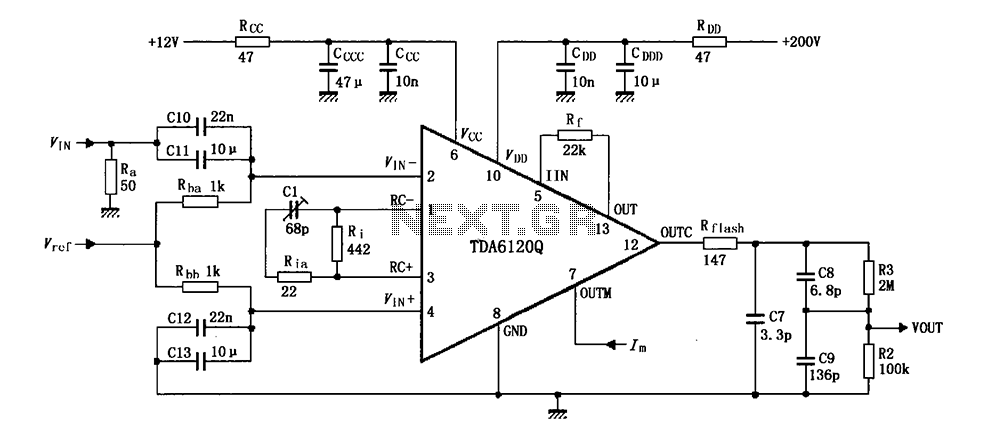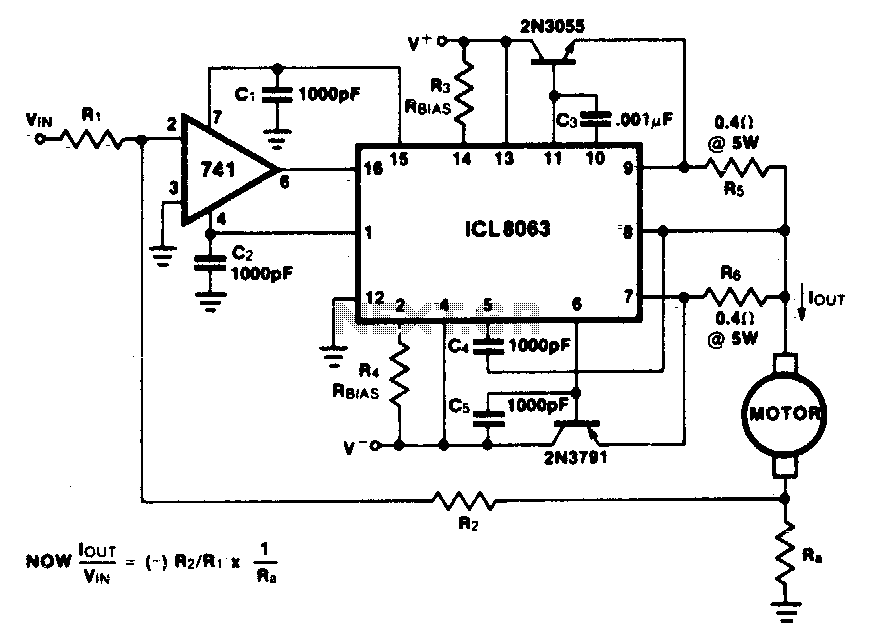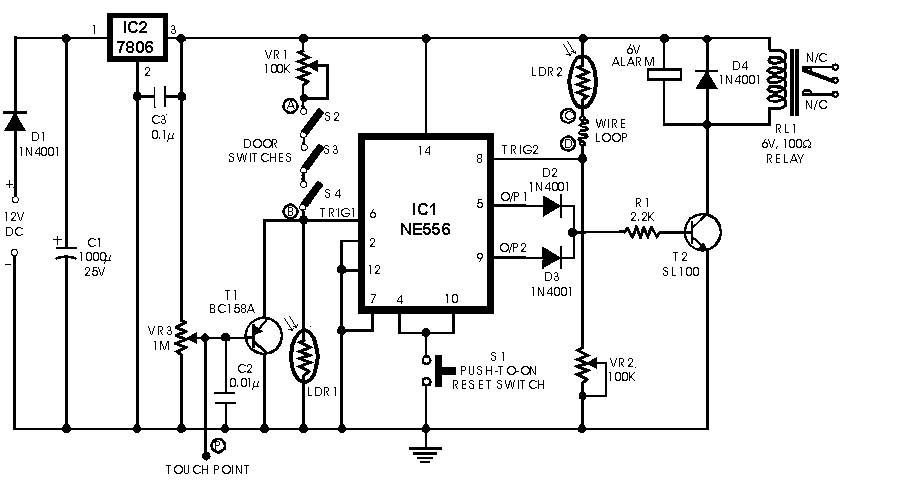
The Multi-purpose signal generator circuit

The multi-purpose signal generator circuit consists of integrated circuit oscillators and frequency dividers. It generates square waves ranging from high frequencies to sub-audio frequencies and also produces a frequency standard in the VHF range. The alternative oscillator section feeds the signal back to a 10-frequency divider stage.
The multi-purpose signal generator circuit employs integrated circuits (ICs) to achieve versatile frequency generation. The core of this circuit is based on oscillator configurations, which can produce square waveforms across a broad spectrum, from high frequencies suitable for RF applications down to sub-audio frequencies for various testing purposes.
The circuit typically utilizes a combination of astable and monostable multivibrator configurations to create stable oscillations. The astable multivibrator generates continuous square waves, while the monostable configuration can be triggered to produce single pulses of a defined duration. These oscillators can be implemented using common ICs such as the 555 timer or dedicated oscillator ICs.
Frequency dividers, such as the SN7490, are integral to this design. They reduce the output frequency from the oscillators to desired lower frequencies through a series of binary division stages. The SN7490 is a decade counter that can divide the input frequency by factors of ten, allowing for precise control over the output frequency range. This functionality is particularly useful in applications requiring specific frequency standards, such as VHF communication systems.
The feedback mechanism from the alternative oscillator to the frequency divider ensures that the oscillation frequency remains stable and accurate. By utilizing multiple divider stages, the circuit can produce a wide array of output frequencies, making it suitable for various testing and signal generation applications in electronic design and development.
Overall, this multi-purpose signal generator circuit is a valuable tool in electronics, providing flexibility for generating and manipulating signals across a wide frequency range.The multi-purpose signal generator circuit is composed of the integrated circuit oscillators and the frequency dividers, it produces the square wave from the high frequency to the sub-audio frequency, and it also produces the frequency standard VHF. The alternative oscillator part feeds the signal back to the 10-frequency divider stage. The extra SN7490 freq.. 🔗 External reference
The multi-purpose signal generator circuit employs integrated circuits (ICs) to achieve versatile frequency generation. The core of this circuit is based on oscillator configurations, which can produce square waveforms across a broad spectrum, from high frequencies suitable for RF applications down to sub-audio frequencies for various testing purposes.
The circuit typically utilizes a combination of astable and monostable multivibrator configurations to create stable oscillations. The astable multivibrator generates continuous square waves, while the monostable configuration can be triggered to produce single pulses of a defined duration. These oscillators can be implemented using common ICs such as the 555 timer or dedicated oscillator ICs.
Frequency dividers, such as the SN7490, are integral to this design. They reduce the output frequency from the oscillators to desired lower frequencies through a series of binary division stages. The SN7490 is a decade counter that can divide the input frequency by factors of ten, allowing for precise control over the output frequency range. This functionality is particularly useful in applications requiring specific frequency standards, such as VHF communication systems.
The feedback mechanism from the alternative oscillator to the frequency divider ensures that the oscillation frequency remains stable and accurate. By utilizing multiple divider stages, the circuit can produce a wide array of output frequencies, making it suitable for various testing and signal generation applications in electronic design and development.
Overall, this multi-purpose signal generator circuit is a valuable tool in electronics, providing flexibility for generating and manipulating signals across a wide frequency range.The multi-purpose signal generator circuit is composed of the integrated circuit oscillators and the frequency dividers, it produces the square wave from the high frequency to the sub-audio frequency, and it also produces the frequency standard VHF. The alternative oscillator part feeds the signal back to the 10-frequency divider stage. The extra SN7490 freq.. 🔗 External reference





